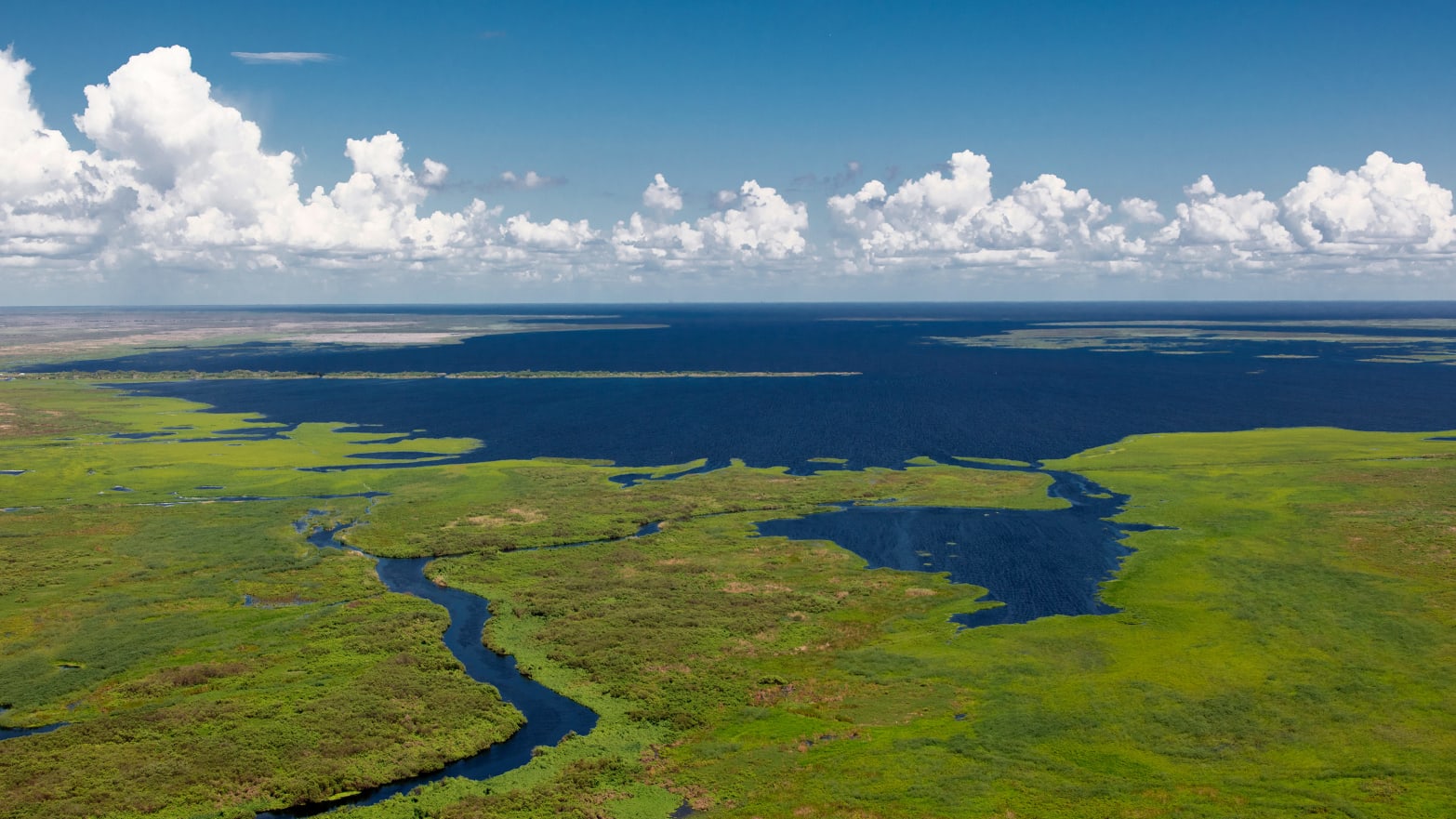Lake Okeechobee in Okeechobee County, Florida
Introduction
Located in central southern Florida, Lake Okeechobee is the second largest naturally occurring freshwater lake in the contiguous 48 states. Due to over a century of land and water management practices such as draining wetlands, the water storage capacity of this lake has been drastically reduced. Additionally, high precipitation events cause freshwater to overflow from the lake into nearby estuaries in the watershed, constantly altering the salinity of these waterways and negatively impacting flora and fauna. Due to this issue, the United States Army Corps of Engineers (USACE) plans to undertake an ecosystem restoration project for the lake in order to increase water storage capacity and improve overall ecosystem health within the lake.
U.S. Army Corps of Engineers
ATTN” CECW-P(IP)
7701 Telegraph Road
Alexandria, Virginia 22315-3859
To Whom It May Concern:
Environmental Review, Inc. has reviewed the Implementation Report, Environmental Impact Statement, (IR/EIS) and Appendix C and has the following comments:
Comments
-
Section 5.2.6.3 of the EIS titled Amphibians and Reptiles claims that converting dry land to wetlands to increase the spatial extent of aquatic/semi-aquatic habitat would result in an opportunity cost of 14,436 acres of habitat for upland reptile species. How is this proposed habitat loss going to be mitigated presently and prevented in the future? Additionally, it is noted that a reduction in high-flow events could potentially increase seagrass coverage, yielding more foraging area for green sea turtles. The assumption is that this aquatic vegetation will have adequate conditions to grow, what can be done to ensure these water quality standards?
-
Table 5-40 states that there are known and suspected territories of the threatened northern crested caracara overlapping with the Wetland Attenuation Feature (WAF) and wetland footprints. The Florida bonneted bat is an endangered species whose habitat also coincides with this project. According to the Florida Fish and Wildlife Conservation Commission’s website, the main threat facing these species is habitat loss, particularly a loss of roosting sites in the case of the Florida bonneted bat. The EIS claims that this project may affect both species, but seeing as habitat loss is certain, the project likely will affect them. Given the uncertainty of total known caracara territories in the project area, what can be done between now and the anticipated start of development to ensure that these birds will suffer the fewest possible impacts due to this project? Knowing that the Florida bonneted bat depends on roosting sites, what will be done to replace the ones removed over the course of the project?
-
In sections C.2.24.1 and C.2.24.2.2 of Appendix C, the water quality concerns of the Miccosukee Tribe of Indians of Florida (MTIF) and Seminole Tribe of Florida (STOF) are noted. Both tribes are concerned by the placement of ASR wells within a location that overlaps with the aquifer from where they obtain their drinking water. The MTIF support shallow wells, which are more likely to treat water to meet drinking standards. Access to clean drinking water is of particular importance to the MTIF. Both tribes have expressed concern regarding the quality of the eventual resurfacing water from the aquifer after it has gone down through the well. It is written in the same sections that the long-term improvements in environmental quality to the wetlands outweigh those concerns. Water quality is stated to not be a priority for this project, but seeing as it can potentially impact the drinking water resources of indigenous tribes, what reassurance can the tribes be given that the ASR wells will not fail and endanger their water supply? How can the United States Army Corps of Engineers guarantee safe drinking water for these tribes? For this reason, the Tentatively Selected Plan known as Alternative 1BW is advised due to it proposing shallower WAFs to help alleviate the water quality concerns of the native tribes while maximizing ecosystem restoration benefits compared to costs, as noted in section ES1.5 of the EIS.
Please direct all responses to these comments to this address: This email address is being protected from spambots. You need JavaScript enabled to view it.
Sincerely,
Matthew Coughlin (Associate in Maryland)
Environmental Reviewer
Environmental Review, Inc.
1792 Rogers Ave
San Jose, California 95112
